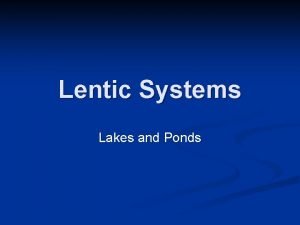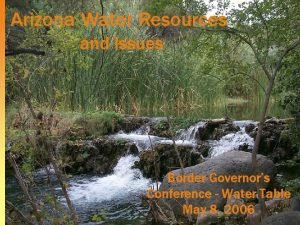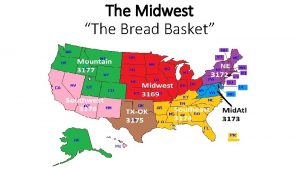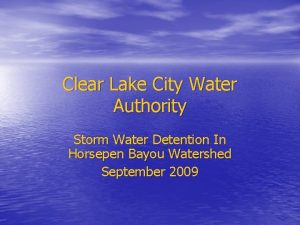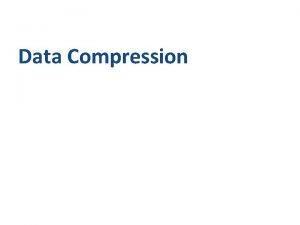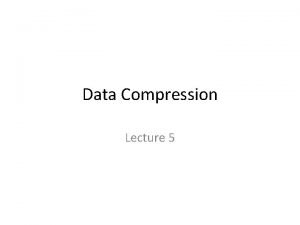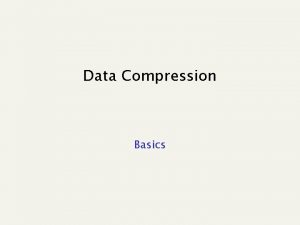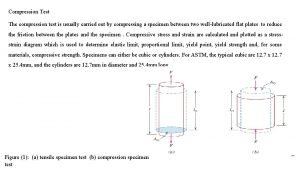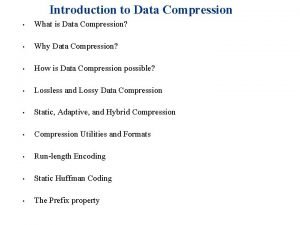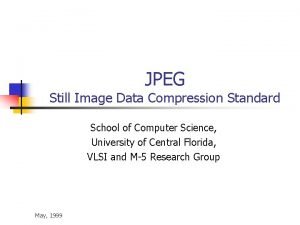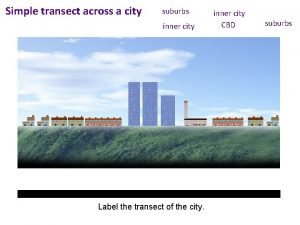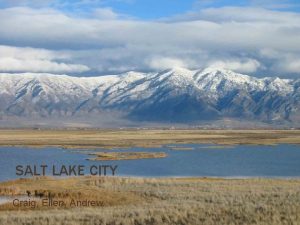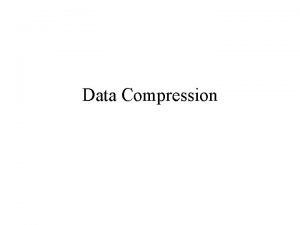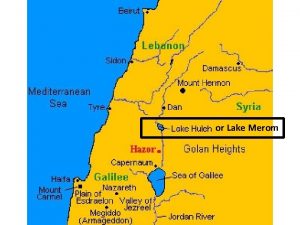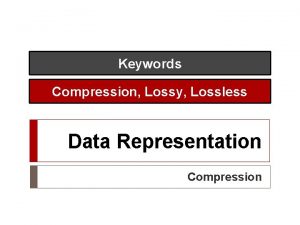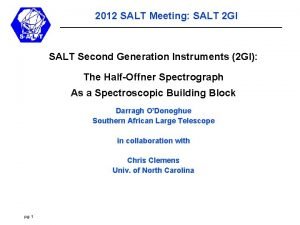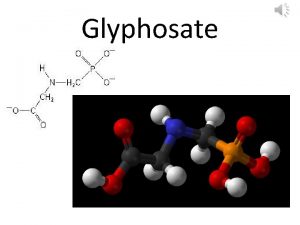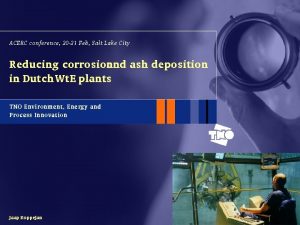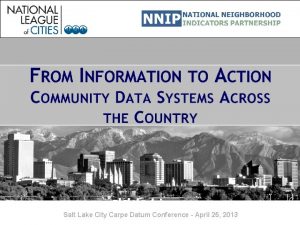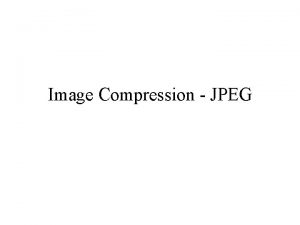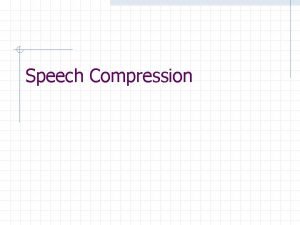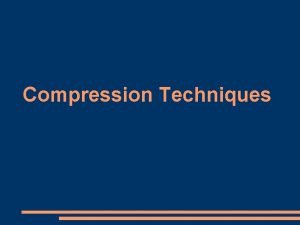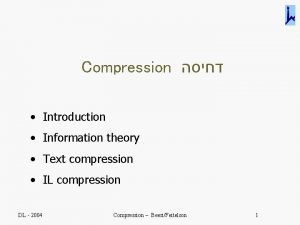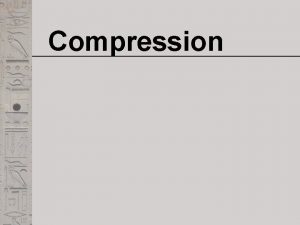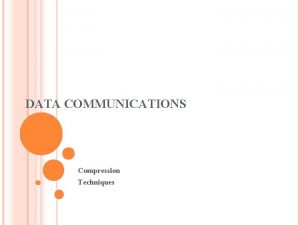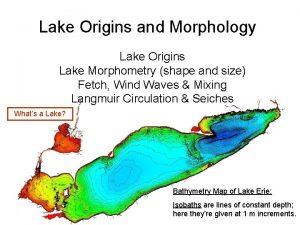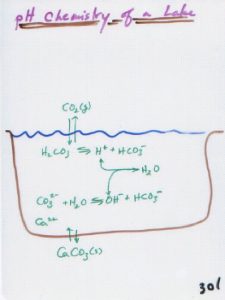2015 Data Compression Conference Salt Lake City United


































- Slides: 34

2015 Data Compression Conference Salt Lake City, United States, 7 -9 April 2015 FASTER COMPRESSED QUADTREES Travis Gagie Javier González Susana Ladra Gonzalo Navarro Diego Seco

2 / 34 Outline 1. Introduction 2. Compressed quadtree representation 3. Experimental evaluation 4. Conclusions 5. Future work

3 / 34 Outline 1. Introduction 2. Compressed quadtree representation 3. Experimental evaluation 4. Conclusions 5. Future work

4 / 34 Introduction • Storing and querying two-dimensional points sets is important • Computational geometry • Geographic information systems • Graphics • Many other fields

5 / 34 Introduction • Real world point sets tend to be clustered • Using a machine word for each point is wasteful • Compressing data allows for faster operations because of caching • We are looking for a structure able to take advantage of the clustering property to improve space and time performance

6 / 34 Introduction • Example with k = 2 0 1 0 0 0 0 1 1 1 0 0 0 0 0 0 0 0 0 0 0 0 0 0 0 0 0 0 0 0 0 0 0 0 0 1 0 0 0 0 0 0 0 1 0 1 0 0 0 0 0 0 0 0 0 0 0 0 0 0 0 0 0 0 0 0 0 0 0 0 0 T = 101111010100100011001000000101011110 L = 01000011001010101000011000100100

7 / 34 Introduction • Retrieving neighbors lists: • Top-down traversal of the tree • Example: retrieve the direct neighbors of page 10 0 1 2 3 4 5 6 7 8 9 10 11 12 13 14 15 0 0 1 0 0 0 0 1 0 0 1 1 1 0 0 0 2 0 0 0 0 3 0 0 0 0 4 0 0 0 0 5 0 0 0 0 6 0 0 0 0 7 0 0 0 1 0 0 0 0 0 8 0 0 0 1 0 0 0 0 9 0 0 0 1 0 1 0 0 0 10 0 0 0 11 0 0 0 0 12 0 0 0 0 13 0 0 0 0 14 0 0 0 0 15 0 0 0 0 0 2 4 6 8 10 12 14 16 18 20 22 24 26 28 30… T = 101111010100100011001000000101011110 children(9) = rank children(2) = rank 1(T, 9)*k (T, 2)* k 22 = 7*4=28 = 2*4=8 L = 01000011001010101000011000100100

8 / 34 Outline 1. Introduction 2. Compressed quadtree representation 3. Experimental evaluation 4. Conclusions 5. Future work

9 / 34 Compressed quadtree representation • Suppose we have a 4 x 4 matrix where each cell contains 0 or 1 • Only 1’s are relevant • Storing only cells with value 1 is necessary • (0, 0) • (3, 0) • (1, 2) • (2, 2) • (1, 3) How can we store them to take advantage of the clustering property?

10 / 34 Compressed quadtree representation • Quadcode: Binary representation of a point in a quadtree Path to a leaf Matrix Quadtree • Closed points share a common prefix (related with quadrants) • We will use this property for compression

11 / 34 Compressed quadtree representation Same than using binary representation and interleaving bits: 1001 1011 We can compute each quadcode in O(1) with precomputed tables

12 / 34 Compressed quadtree representation • Storing points in a trie

13 / 34 Compressed quadtree representation •

14 / 34 Compressed quadtree representation • Heavy path decomposition • Technique for decomposing a rooted tree into a set of heavy paths • Each non-leaf node selects one heavy edge • A heavy edge is the edge of a subtree with the most number of leaves • Selected edges form a heavy path

15 / 34 Compressed quadtree representation • In each step, one edge is selected and the other one is stored in a queue • After finish building a heavy path, a node is retrieved from the queue and the process start again

16 / 34 Compressed quadtree representation

17 / 34 Compressed quadtree representation • Each Next bitmap supports rank operations

18 / 34 Compressed quadtree representation •

19 / 34 Compressed quadtree representation • Remaining quadcode: 100 Remaining path: 0100000

20 / 34 Compressed quadtree representation • Remaining quadcode: 00 Remaining path: 00

21 / 34 Compressed quadtree representation •

22 / 34 Outline 1. Introduction 2. Compressed quadtree representation 3. Experimental evaluation 4. Conclusions 5. Future work

23 / 34 Experimental evaluation • We use grid datasets from different domains: • Geographic information systems (GIS) • Social networks (SN) • Web graphs (WEB) • RDF (RDF) • Space is measured in bits per point (bpp)

24 / 34 Experimental evaluation •

25 / 34 Experimental evaluation • Types of membership • Empty cells • Filled cells • Isolated filled cells • Measure: Average time per query in nanoseconds

26 / 34 Experimental evaluation

27 / 34 Experimental evaluation Left point – Dense Middle point – Medium Right point – Sparse

28 / 34 Experimental evaluation Left point - dblp 2011 Right point – enwiki 2013

29 / 34 Experimental evaluation

30 / 34 Outline 1. Introduction 2. Compressed quadtree representation 3. Experimental evaluation 4. Conclusions 5. Future work

31 / 34 Conclusions • Nice theorical bounds and it is practical • Space requirements are similar to other space- efficient representation of quadtrees • Faster handling isolated filled cells

32 / 34 Outline 1. Introduction 2. Compressed quadtree representation 3. Experimental evaluation 4. Conclusions 5. Future work

33 / 34 Future work • Generalization to higher dimensions • Experimental results for range reporting (querying for points in a particular region)

2015 Data Compression Conference Salt Lake City, United States, 7 -9 April 2015 FASTER COMPRESSED QUADTREES Travis Gagie Javier González Susana Landra Gonzalo Navarro Diego Seco If you have any question: javigonzalez@udec. cl
 Salt lake city compression
Salt lake city compression Tracy swena
Tracy swena Optumlink
Optumlink Salt lake city residential building codes
Salt lake city residential building codes Salt lake city fsdo
Salt lake city fsdo Va fiduciary hub
Va fiduciary hub Optum salt lake city
Optum salt lake city Fatpipe vpn
Fatpipe vpn 866-556-8166
866-556-8166 Salt lake temple baptismal font
Salt lake temple baptismal font Great salt lake salinity
Great salt lake salinity Osha salt lake technical center
Osha salt lake technical center Data compression in data mining
Data compression in data mining Littoral limnetic
Littoral limnetic Lake powell and lake mead
Lake powell and lake mead Lake powell and lake mead
Lake powell and lake mead Bread basket of the us
Bread basket of the us Led conference 2015
Led conference 2015 Ulvan
Ulvan Insight 2015 conference
Insight 2015 conference Clear lake water authority
Clear lake water authority Confidential do not distribute
Confidential do not distribute What is lossy data compression
What is lossy data compression Image compression
Image compression Adaptive huffman coding in data compression
Adaptive huffman coding in data compression Uniquely decodable code
Uniquely decodable code Merrval
Merrval Compression test of ductile material
Compression test of ductile material Definition of data compression
Definition of data compression Lossless compression in multimedia
Lossless compression in multimedia Jpeg: still image data compression standard
Jpeg: still image data compression standard Jpeg still image data compression standard
Jpeg still image data compression standard Twin city swim conference
Twin city swim conference Griffen ford model
Griffen ford model Cbd inner city suburbs
Cbd inner city suburbs













